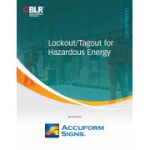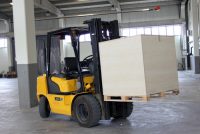Lockout/Tagout for Hazardous Energy
“Lockout/Tagout” refers to specific practices and procedures to safeguard employees from the unexpected energization or start-up of machinery and equipment, or the release of hazardous energy during service or maintenance activities. Every year, people are killed on the job by activated machinery. Many of those deaths could have been prevented by following lockout/tagout procedures to […]


